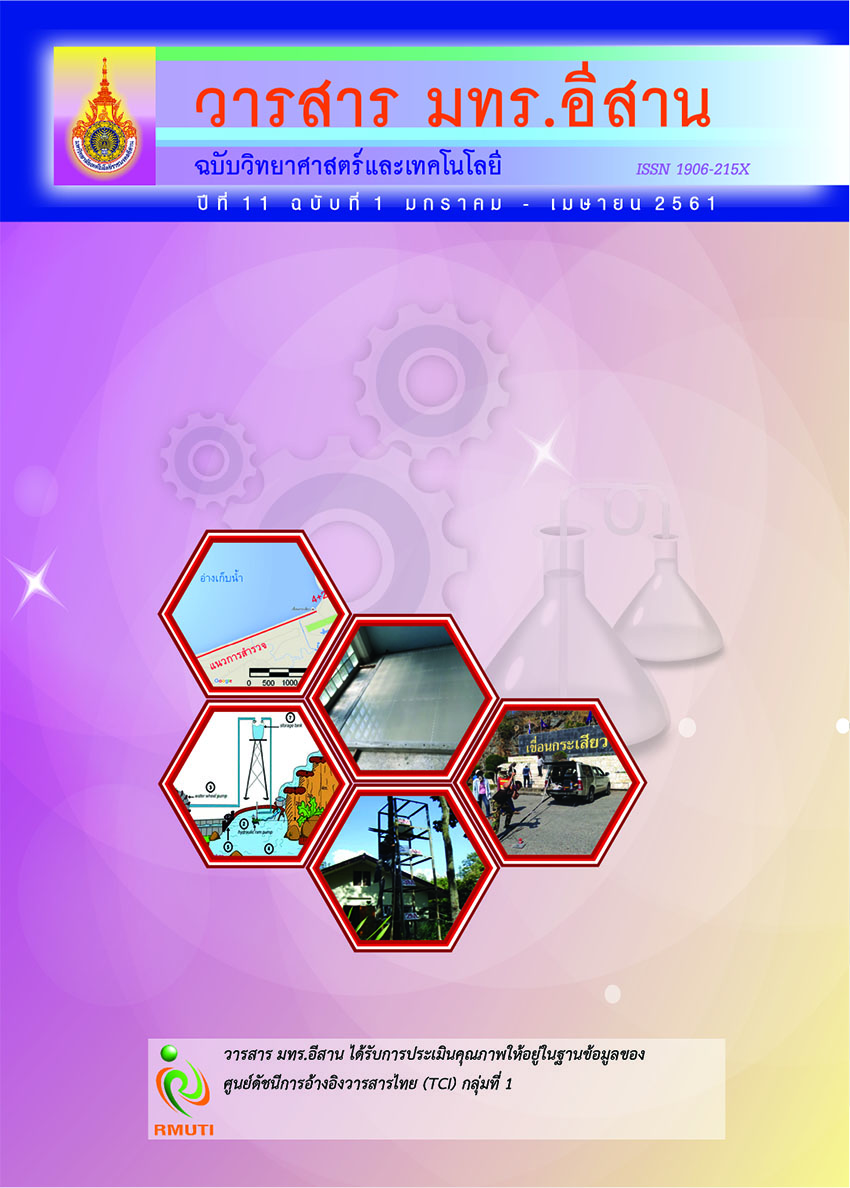Dam Assessment by Multi-channel Analysis of Surface Wave Technique, MASW
Main Article Content
Abstract
Multi-channel surfi ng for monitoring dams is a modernised technological approach that
saves time and money in dam maintenance. A Case studiy of the Krasio-Dam project
located in Aumpoe Dan-Chang Suphan-Buri province. The starting from the generate shear
ware source by beat the hammer to get the signal, then refl ected signal go through the
ground surface, then the receiver can get the signal. The receiver transforms into the data
and go to recording station by cable. The recording station process data with seisimager
S/W. This program transforms ware signal to 2 D-crossection photo of geological structure
of the surveyed section. The results showed that the speed of shear wave penetration
travels between 100 and 850 meters per second. It is able to classify the densities and types
of soil layer into four classes (labelled B to E). A low shear wave indicates high humidity
with low density. These are critical areas of weakness that need monitoring and fast
maintenance of the dam. The study showed the reductions in exploration working time as
well as budget reductions and improved accuracy of dam assessment.
Article Details
References
2016). Available (https://water.rid.go.th/damsafety/downloads_dam.php)
[2] Young-Chul, O. H., Hae-Sang, Jeong, Young-Kyu, Lee, and Howoong, Shon. (2003). Safety
Evaluation of Rock-Fill Dam by Seismic (MASW) and Resistivity Methods. Symposium on
the Application of Geophysics to Engineering and Environmental Problems 2003.
pp. 1377-1386
[3] Park, C. B., Miller, R. D., and Xia, J. (1999). Multichannel Analysis of Surface Waves (MASW).
Geophysics. Vol. 64, No. 3, pp. 800-808
[4] Mario, C. and Jutta, H. (2007). Combined Ground Penetrating Radar and MASW Surveys
to Locate Dam Seeps. Symposium on the Application of Geophysics to Engineering and
Environmental Problems 2008. pp. 997-1006
[5] Dwain, K. B., Jose, L. L., and Charles, M. D. (1989). Comprehensive Geophysical Investigation
of an Existing Dam Foundation Part 1. Geophysics: The Leading Edge of Exploration. pp.10-18
[6] Narongchai, W., Chanarop, V., and Orawan, J. (2017). Dam Stability Analysis by Electrical
Resistivity Imaging and Natural Electric Potential Technique. RMUTI JOURNAL Science
and Technology. Vol. 10, No. 1, pp. 35-48 (in Thai)
[7] Julian, I., Carole, D. J, John, W. L., Richard, D. M., and Drew, C. (2009). Near-surface Evaluation
of Ball Mountain Dam, Vermont, Using Multi-channel Analysis of Surface Waves (MASW)
and Refraction Tomography Seismic Methods on Land-streamer Data SEG Houston 2009.
International Exposition and Annual Meeting. pp. 1454-1458
[8] Thanop, T., Nungnuch, L., Prapaporn, J., and Angkasiri, H. (2008). Determination of Shear-wave
Velocity of Bangkok Subsoils by the MASW Method. Research and Development Journal.
Vol. 19, No. 4, pp. 58-70 (in Thai)
[9] Department of Mineral Resources. (2007). Geological Information of Suphanburi Province.
Access (25 December 2016). Available (https://www.dmr.go.th)
[10] Sherer, S. G. (1996). Geotechnical Investigations for Safety of Dams Study. U. S. Army Corps
of Engineers. p. 116
[11] URS Corporation. (2003). Success Dam Geophysical Investigation. U. S. Army Corps of
Engineers. Vol. 205, p. 68
[12] Park, C. B., Xia, J., and Miller, R. D. (1998). Imaging Dispersion Curves of Surface Waveson
Multi-channel Record. SEG Expanded Abstracts. pp. 1377-1380
[13] Foti, S. (2000). Multi Station Methods for Geotechnical Characterisation Using Surface
Waves. Ph.D Diss. Politecnico di Torino, p. 229
[14] Brian, J. E. and William, H. D. (1997). A Handbook for Seismic Data Acquisition in Exploration.
Society of Exploration Geophysicists. p. 305
[15] Geometrics. (2016). Surface Wave Analysis Software. Access (20 December 2016). Available
(https://www.geometrics.com)
[16] Yilmaz, O. (1987). Seismic Data Processing. Society of Exploration of Geophysics-Investigations
in Geophysics. Vol. 2, p. 526
[17] Ted, A., Bethany, L. B., Michael, H. P., Brian, R., Paul, B., and Lewis, H. (2007). Electrical
Characterization of Success Dam in Porterville. Symposium on the Application of Geophysics
to Engineering and Environmental Problems. pp. 41-60
[18] Building Seismic Safety Council. (1997). NEHRP Recommended Provisions for Seismic
Regulations for New Buildings. Federal Emergency Management Agency. p. 290

